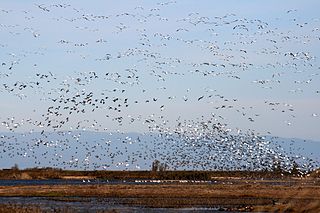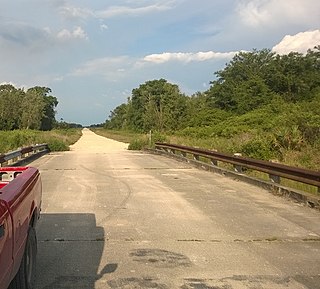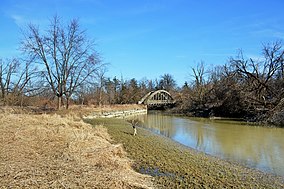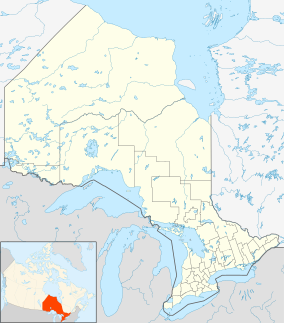
Prince Albert National Park encompasses 3,874 square kilometres (1,496 sq mi) in central Saskatchewan, Canada and is located 200 kilometres (120 mi) north of Saskatoon. Though declared a national park March 24, 1927, it had its official opening ceremonies on August 10, 1928, performed by Prime Minister William Lyon Mackenzie King. This park is open all year but the most visited period is from May to September. Although named for the city, the park's main entrance is actually 80 km (50 mi) north of Prince Albert via Highways 2 and 263 which enters the park at its southeast corner. Two additional secondary highways enter the park, No. 264, which branches off Hwy. 2 just east of the Waskesiu townsite, and No. 240, which enters the park from the south and links with 263 just outside the entry fee-collection gates.

The Sacramento National Wildlife Refuge Complex is part of the United States system of National Wildlife Refuges (NWR). It is located in northern California, in the valley of the Sacramento River.

The Chequamegon–Nicolet National Forest is a 1,530,647-acre (6,194.31 km2) U.S. National Forest in northern Wisconsin in the United States. Due to logging in the early part of the 20th century, very little old growth forest remains. Some of the trees that grow there today were planted by the Civilian Conservation Corps in the 1930s. The national forest lands contain trees and vegetation corresponding to the North Woods Ecoregion that is prevalent throughout the upper Great Lakes region.

Picayune Strand State Forest is one of 37 state forests in Florida managed by the Florida Forest Service. The 78,000-acre forest consists primarily of cypress swamps, wet pine flatwoods and wet prairies. It also features a grid of closed roads over part of it, left over from its previous land development schemes.

The Texas Blackland Prairies are a temperate grassland ecoregion located in Texas that runs roughly 300 miles (480 km) from the Red River in North Texas to San Antonio in the south. The prairie was named after its rich, dark soil.
The Toronto and Region Conservation Authority is one of 36 conservation authorities in Ontario, Canada. It owns more than 16,000 hectares of land in the Toronto region and employs more than 400 full-time employees and coordinates more than 3,000 volunteers each year. TRCA's area of jurisdiction is watershed-based, and includes 3,467 square kilometres: 2,506 on land and 961 water-based in Lake Ontario. This area comprises nine watersheds from west to east: Etobicoke Creek, Mimico Creek, Humber River, Don River, Highland Creek, Petticoat Creek, Rouge River, Duffins Creek, Carruthers Creek.

Claireville is an unincorporated community in Toronto, and Brampton, Ontario, Canada. It is bounded by Finch Ave to the west and south, Albion road to the east, Steeles Avenue to the North. The former hamlet of Ebenezer, Brampton is found within Clairville.

Claireville is a neighbourhood and former hamlet in the city of Toronto, Ontario, Canada. It is located in the northwest corner of Toronto, in the former city of Etobicoke. Today Claireville is almost wholly industrial/commercial.

The Churn Creek Protected Area is a 36,747-hectare (90,800-acre) provincial protected area in British Columbia, Canada. It is a mix of dryland canyon and steppe and adjoining rangeland flanking the canyon of Churn Creek and that stream's confluence with the Fraser River at the northern apex of the Camelsfoot Range. The historic Gang Ranch is just north of the Churn Creek Protected Area. The Empire Valley Ranch ecological preserve was added to the Protected Area in an expansion.

Tumalo State Park is a well-developed state park in Deschutes County, Oregon, United States. Established in 1954, the park is located northwest of the city of Bend and along the Deschutes River at a site home to many bird species. The park is popular for picnics, swimming, fishing, hiking, and camping, and is open year-round.

The fauna of Toronto include a variety of different species situated within the city limits. Toronto contains a mosaic of ecosystems which allows it to support a large variety of fauna; many of which are situated within the Toronto ravine system. The ravine system including forests, rivers and streams, and wetland ecosystems. A number of other animals have also adapted to the Toronto's urban environment, parks, and the creeks and rivers that run throughout the city.

The Cabin Lake Guard Station is a Forest Service compound consisting of six simple rustic buildings located in the Deschutes National Forest in central Oregon. It was originally built as a district ranger station for the Fort Rock Ranger District. It was later converted to a summer guard station. The guard station is now closed, but the adjacent campground is open. While still very remote, it is a popular location for bird watching and nature photography. The Cabin Lake Guard Station is listed on the National Register of Historic Places.

Abbotts Lagoon is a two-stage lagoon on the northwestern coast of the Point Reyes National Seashore, southwest of Tomales Point, in California, United States. The upper lagoon is a fresh water impoundment which overflows into a lower brackish level with occasional winter tidal exchange. The eastern shore of the lagoon is covered with old growth northern coastal scrub including coyote bush, yellow bush lupine, sword fern and California blackberry.

Mizhrichynskyi Regional Landscape Park is the largest regional landscape park in Ukraine. It was founded in 2002 near the village Otrokhy in Kozelets Raion of Chernihiv Oblast. It is located between two large rivers, the Dnipro and Desna, from which the park's Ukrainian name meaning "between the rivers" is derived. Mizhrichynskiy Landscape Park has an area of more than 1,000 square kilometers in the south-eastern Chernihiv region. The Desna river forms the eastern boundary of the park, while the western and southern boundaries coincide with the border of Chernihiv region. There are many swamps, bogs and lakes.

Todd Lake is a natural lake near the crest of the Cascade Range in central Oregon in the United States. The lake covers 45 acres (18 ha). It is named in honor of John Y. Todd, an early settler in Central Oregon. Today, the lake and surrounding forest is managed by the United States Forest Service as part of the Deschutes National Forest. The Oregon Department of Fish and Wildlife regularly stocks the lake with brook trout. There is a day-use area and a rustic campground located on the west shore of the lake. In the summer, Todd Lake is a popular outdoor recreation site for picnicking, fishing, hiking, and nature viewing. In the winter, trails in the Todd Lake area are used for cross-country skiing and snowshoeing.

Heart Lake Conservation Area (HLCA) occupies 169 hectares in the Etobicoke Creek watershed, within the City of Brampton, Ontario. It is owned and managed by the Toronto and Region Conservation Authority (TRCA).

Missouri is home to a diversity of both flora and fauna. There is a large amount of fresh water present due to the Mississippi River, Missouri River, and Lake of the Ozarks, with numerous smaller tributary rivers, streams, and lakes. North of the Missouri River, the state is primarily rolling hills of the Great Plains, whereas south of the Missouri River, the state is dominated by the Oak-Hickory Central U.S. hardwood forest.

Fred C. Babcock/Cecil M. Webb Wildlife Management Area (WMA) is Florida's oldest Wildlife Management Area and protects 80,772 acres just south and east of Punta Gorda in Charlotte and Lee Counties, Florida. The area is accessed from its own exit off of Interstate-75.

Carden Alvar Provincial Park is a provincial park located in the Kawartha Lakes in Central Ontario, Canada. Alvars are globally rare ecosystems found exclusively in Northern Europe and the Great Lakes region of North America. The park is classified as a non-operating, natural environment park and was established in 2014. Natural environment parks protect outstanding landscapes, ecosystems and other elements of the province's wilderness to provide high quality recreational and educational experiences for visitors.






















